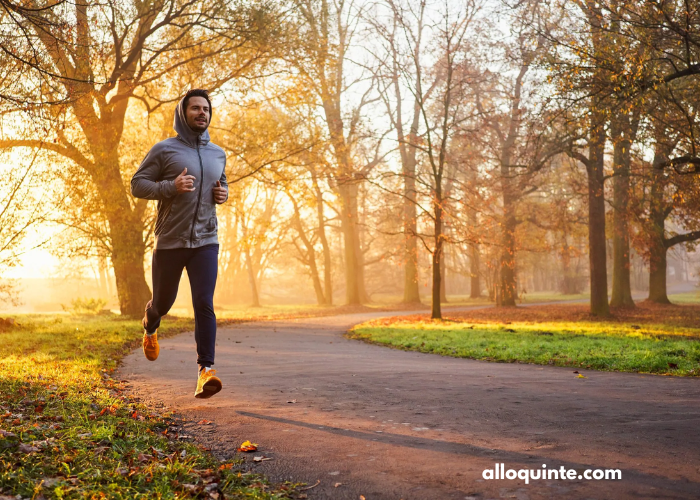In our fast-paced world, where the demands of work, family, and social life can often leave us feeling stressed and overwhelmed, the pursuit of health and fitness can sometimes take a backseat. We find ourselves rushing from one commitment to the next, often neglecting the very foundation of a healthy life – our physical and mental well-being. In this modern age, where convenience often trumps health, the concept of “mindful movement” has emerged as a powerful and transformative approach to achieving and maintaining health and fitness.
Mindful movement is not just another exercise trend. It’s a holistic approach that encourages us to slow down, pay attention to our bodies, and cultivate a deep connection between our physical and mental states. In this article, we’ll explore the principles of mindful movement, its benefits, and how you can incorporate it into your daily life to pave the way to a healthier, happier you.
Understanding Mindful Movement
At its core, mindful movement is about bringing mindfulness – the practice of being fully present and aware in the moment – into the realm of physical activity. It’s not limited to any specific exercise or sport; rather, it can be applied to any form of movement, from yoga and tai chi to walking, swimming, or even weightlifting. The key is to approach your chosen activity with a heightened sense of awareness and intention.
Here are some fundamental principles of mindful movement:
- Present-Moment Awareness: Mindful movement starts with being fully present in the moment. Instead of going through the motions on autopilot, you intentionally focus your attention on the sensations, movements, and breath associated with your activity.
- Non-Judgmental Observation: Mindfulness encourages you to observe your body and its capabilities without judgment. You don’t compare yourself to others or criticize yourself for perceived shortcomings. Instead, you accept where you are at that moment and work from there.
- Breath Awareness: The breath is a central component of mindful movement. Paying attention to your breath can help you synchronize it with your movements, promote relaxation, and enhance your mind-body connection.
- Body Awareness: Mindful movement involves a deep awareness of your body’s sensations, alignment, and balance. You tune into how each movement feels and make adjustments as needed to prevent strain or injury.
- Intention and Purpose: Your movements are driven by a clear intention and purpose. Whether it’s to strengthen your body, improve flexibility, or find relaxation, mindful movement is goal-oriented but not goal-obsessed.
- Gradual Progression: Mindful movement encourages gradual progression and respects the body’s limits. It’s not about pushing yourself to the extreme but rather about nurturing your body’s growth and development over time.
The Benefits of Mindful Movement
Now that we have a foundational understanding of mindful movement, let’s delve into the myriad of benefits it offers:
- Stress Reduction: One of the most significant benefits of mindful movement is its ability to reduce stress. By focusing on the present moment and letting go of worries and distractions, you can experience a deep sense of relaxation and calm.
- Improved Mental Health: Mindful movement has been shown to alleviate symptoms of anxiety, depression, and other mental health conditions. The combination of physical activity and mindfulness can boost mood and enhance overall well-being.
- Enhanced Body Awareness: Through mindful movement, you develop a heightened sense of body awareness. This can help you identify and address imbalances, improve posture, and reduce the risk of injury.
- Better Physical Fitness: Contrary to the misconception that mindful movement is solely about relaxation, it can also contribute to improved physical fitness. Whether you’re engaging in yoga for strength or tai chi for balance, mindful movement can help you achieve your fitness goals.
- Mind-Body Connection: Mindful movement strengthens the connection between your mind and body. This heightened awareness can lead to more intuitive eating, better sleep, and an overall healthier lifestyle.
- Pain Management: For those dealing with chronic pain, mindful movement can be a valuable tool. By learning to focus on the sensations in your body and move with intention, you can often reduce pain and discomfort.
- Increased Flexibility and Mobility: Mindful movement practices like yoga and tai chi are known for improving flexibility and mobility. Over time, consistent practice can lead to increased range of motion and reduced stiffness.
- Better Posture: Poor posture is a common issue in today’s sedentary world. Mindful movement can help you become more aware of your posture and make adjustments to maintain a healthy alignment.
- Enhanced Focus and Concentration: The practice of mindfulness in movement can spill over into other areas of your life, leading to improved focus, concentration, and productivity.
- Boosted Self-Esteem: By practicing non-judgmental observation and self-acceptance, mindful movement can boost your self-esteem and body confidence.
Incorporating Mindful Movement into Your Life
Now that you’re aware of the numerous benefits of mindful movement, let’s explore how you can start incorporating it into your daily routine:
- Choose an Activity: Begin by selecting an activity that resonates with you. It could be yoga, tai chi, Pilates, swimming, walking, or any form of exercise that you enjoy.
- Start Slowly: If you’re new to mindful movement, don’t rush into it. Start slowly and with manageable sessions. You can gradually increase the duration and intensity as you become more comfortable.
- Create a Dedicated Space: Set up a space in your home or find a peaceful outdoor location where you can practice without distractions.
- Set Intentions: Before each session, set clear intentions for your practice. Ask yourself what you hope to achieve, whether it’s stress relief, improved flexibility, or simply taking time for yourself.
- Focus on Breath: Pay close attention to your breath throughout your practice. Use it as an anchor to keep you present and centered.
- Mindful Warm-Up: Begin with a mindful warm-up. This might involve gentle stretches and movements to prepare your body for more vigorous exercise.
- Mindful Main Activity: During your chosen activity, stay fully engaged in the experience. Notice the sensations in your body, the rhythm of your breath, and the movements you’re making.
- Listen to Your Body: Be attuned to your body’s signals. If you feel discomfort or pain, make adjustments or take a break. Mindful movement is about self-care, not pushing through pain.
- Cool Down and Reflect: After your main activity, take time to cool down and reflect on your practice. Notice how you feel physically and mentally.
- Consistency is Key: Like any form of exercise or mindfulness practice, consistency is essential. Aim to make mindful movement a regular part of your routine.
- Seek Guidance: If you’re unsure where to start or want to deepen your practice, consider seeking guidance from a qualified instructor or joining a class.
- Combine with Other Practices: Mindful movement can complement other wellness practices, such as meditation, healthy eating, and adequate sleep, to create a comprehensive approach to well-being.




